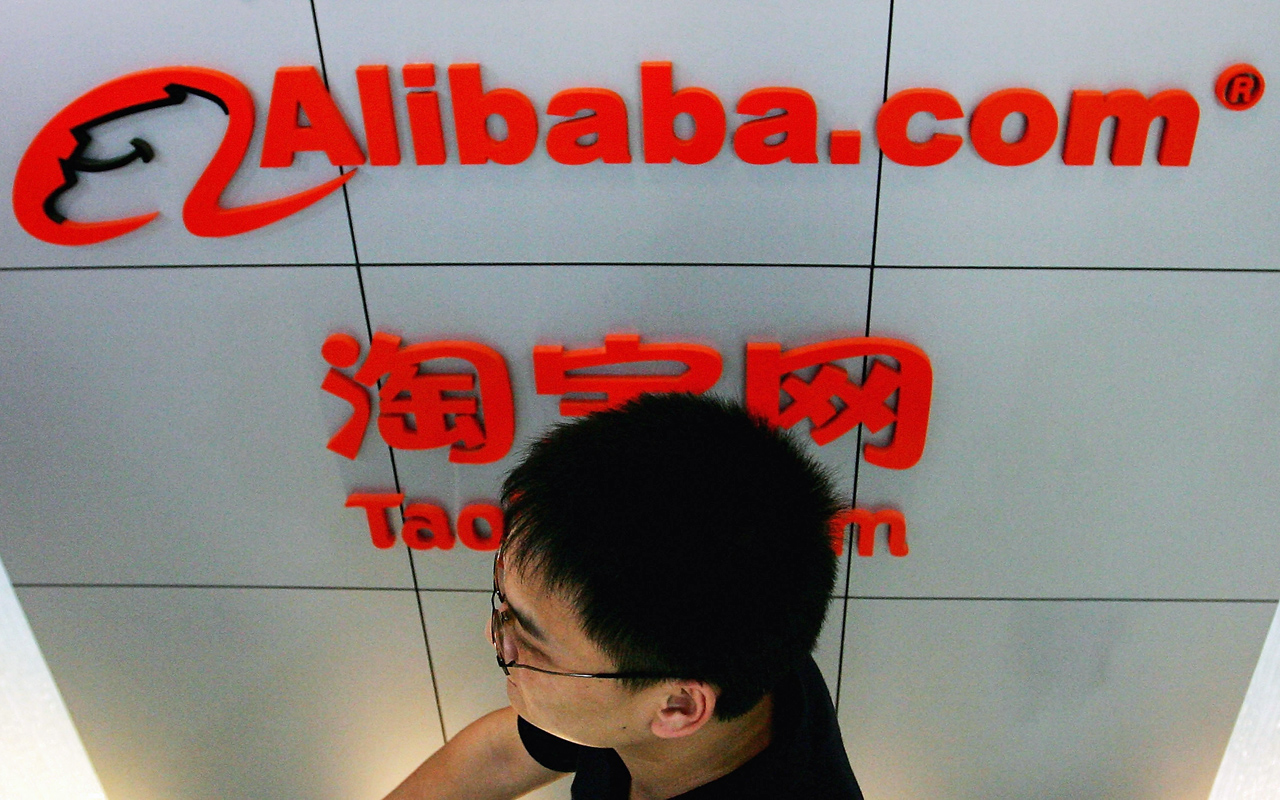Emerging-Markets Stocks: 10 Ways to Play the Next Bull Market
Emerging markets have been a real minefield of late.


Emerging markets have been a real minefield of late. The United States and China have ratcheted up their trade war rhetoric, and investors have been shunning emerging-markets stocks and sticking with the comforts of home.
But they may be doing so at their own detriment. Emerging markets are cheap after a decade of underperformance marked by sagging commodity prices, political instability and strong home-country bias by American investors.
For the contrarian investor willing to look past the headlines, testing the waters in emerging markets makes sense. U.S. stocks are as expensive as they were in the late 1990s by some metrics, while foreign markets in general and emerging markets in particular are cheap and unloved. If history is any guide, EMs should beat the pants off of American stocks over the next decade.
“There is no doubt that the U.S. stock market is expensive (though not quite a bubble like the 1990s), with foreign markets much more reasonable,” explains Meb Faber, CEO of Cambria Investment Management and manager of the Cambria Global Value ETF (GVAL), among other funds. “Today, we find the most reasonable valuations in the beaten-down, emerging markets that sport a valuation roughly half that of the U.S. — some countries are even clocking in with single-digit P/E ratios. “
Faber recommends that investors “close your eyes, hold your nose, and buy a basket of the cheap countries with the plan to hold them for a decade.”
Today, we’ll look at 10 ways to make that trade on emerging-markets stocks using a mixture of exchange-traded funds (ETFs), closed-end funds (CEFs) and individual companies.
Disclaimer
Data is as of Aug. 9, 2018.

iShares MSCI Emerging Markets ETF
- Market value: $31.8 billion
- Expense ratio: 0.69%
The easiest and most straightforward way to invest in emerging markets is via the iShares MSCI Emerging Markets ETF (EEM, $44.13), the largest, oldest and most liquid of all emerging-markets ETFs. It’s not new. It’s not particularly exciting. But it’s tried and true.
EEM has more than $31 billion in assets and has average trading volume of close to 70 million shares per day. The ETF also has an expense ratio of 0.69%, which is moderately low by the standards of non-U.S. ETFs.
The biggest knock on EEM is that it’s not particularly diversified. China makes up 31% of the fund’s holdings, and Taiwan makes up another 12%. That means nearly half the fund is invested in “Greater China.” South Korea and India account for 14% and 9%, respectively. Then it really drops off.
Still, in drilling down to the underlying stock holdings, EEM holds several of the emerging-market growth dynamos you’d likely want to own, such as Tencent Holdings (TCEHY), Alibaba Group (BABA) and Baidu (BIDU), which make up roughly 5%, 4% and 1% of the portfolio, respectively.
If you value liquidity and ease of trading, EEM is probably your best bet. Just be sure you keep its high concentration to China in mind.

WisdomTree Emerging Markets High Dividend ETF
- Market value: $2.0 billion
- Expense ratio: 0.63%
For a different spin, consider the WisdomTree Emerging Markets High Dividend ETF (DEM, $44.30). The idea of an emerging-markets dividend fund might seem a little counterintuitive. After all, EM investing is generally though of as being aggressive, whereas dividend strategies are marketed to the proverbial widows and orphans.
But this is precisely the sort of quirk that makes DEM an interesting alternative.
WisdomTree was an early leader in “smart beta” strategies that moved beyond simple cap weighting, focusing instead on fundamental factors such as dividends and earnings. The index that DEM is based on is fundamentally weighted, based on dividends paid. The index ranks emerging-markets stocks by dividend yield, limiting its pool to only the top 30% highest by dividend yield. DEM yields more than 5%.
As with EEM, China and Taiwan are a large chunk of the portfolio, making up a combined 44%. But it gets interesting after that. Russia and South Africa are the next largest countries, at 15% and 12%, respectively. The largest individual stock holdings are Russian energy firms Lukoil (LUKOY) and Gazprom (OGZPY), each accounting for a little more than 4%.
If you’re looking to broaden your exposure to emerging markets away from the same stocks that virtually everyone else in the space is buying, DEM is a solid option.

WisdomTree India Earnings ETF
- Market value: $1.6 billion
- Expense ratio: 0.84%
Despite being the world’s second most populous country, an industrializing democracy with English-style common law, and a growing presence in technology, India tends to make up a relatively small allocation of most broad emerging-markets indices.
If you’re looking to beef up that allocation, the WisdomTree India Earnings ETF (EPI, $26.88) is a solid option.
In typical WisdomTree style, EPI isn’t weighted by market capitalization. Instead it is weighted by earnings, which gives you larger exposure to the most profitable companies. The approach appears to be working. Since its 2007 inception, EPI has outperformed the MSCI India Index with annualized returns of 1.47% vs. 0.48%. EPI also outperformed the MSCI index modestly over the past one-, three-, five- and 10-year periods.
As you might expect, software and services are a large part of EPI’s portfolio, making up about 21%. But energy and banks chip in another 19% and 18%, respectively.
India still is considerably less developed than China, with per capita GDP of less than half China’s levels. If you believe that India is likely to close that gap in the coming decades, having exposure to Indian stocks makes sense.

VanEck Vectors Vietnam ETF
- Market value: $363.4 million
- Expense ratio: 0.66%
Let’s jump away from the larger emerging markets that tend to generate most of the headlines and instead go a little further off the beaten path in search of growth.
One country worth a serious look is Vietnam. Vietnam’s economy is growing at a blistering 7.4% rate, and the growth rate has consistently been between 5% and 8% over the past eight years.
Vietnam can sustain those high growth rates because it is still a very underdeveloped country with per capita GDP of less than $2,000. It’s also an extremely young country, with about half the population under the age of 25. But these are precisely the kinds of opportunities emerging-markets investors look for.
China abandoned ideological communism 30 years ago, choosing to embrace capitalism (albeit with a lot of state influence). Vietnam is following a similar path. While still nominally a communist country, Vietnam has been opening its economy for the past 20 years.
For exposure to Vietnam, consider the VanEck Vectors Vietnam ETF (VNM, $16.31). This ETF is pretty concentrated, with just 27 holdings, and more than a quarter of the fund invested in just three companies – No Va Land Investment Group, Vingroup and Vietnam Dairy Products. It’s not a pure play, either, with nearly 30% of its portfolio invested in non-Vietnamese companies that do business in Vietnam. But it gets you close enough.

Morgan Stanley Emerging Markets Fund
- Market value: $233.0 million
- Expense ratio: 1.55%
Moving away from ETFs, let’s take a look at the Morgan Stanley Emerging Markets Fund (MSF, $16.51), a closed-end fund with more than 20 years of experience in developing markets.
Closed-end funds (CEFs) are a very different animal than ETFs. Both are funds that trade on an exchange, just like stocks, but that’s where the similarity ends. ETF shares can be created or destroyed based on demand, which ensures that ETFs always trade close to their net asset value (NAV). CEFs, on the other hand, have a fixed number of shares. And with no mechanism to force prices in line with NAV, you can get situation where the share price trades at a large discount or premium to their net asset value.
It’s hard to resist getting a dollar’s worth of assets for 88 cents, but that is exactly the pricing we see in MSF today. The shares trade at a wide 12% discount to NAV.

Alibaba Group
- Market value: $461.8 billion
Now that we’ve covered an assortment of funds, let’s look at some individual names. At the top of the list is Chinese e-commerce and technology conglomerate Alibaba (BABA, $177.19).
Alibaba has been called “the Amazon.com of China” because of its strong presence in online retail, though their retail operations don’t quite work the same way. However, the comparison is apt once you go deeper than retail.
Amazon.com (AMZN) bulls will be the first to tell you that it’s far more than a giant Walmart (WMT) on the web. It’s a technological powerhouse, a major innovator in cloud services and an up-and-coming shipping and logistics empire.
Alibaba essentially does in China everything Amazon does stateside … and more. It is a one-stop shop for the Chinese internet economy.
Because of its clout as the most important non-U.S.-based tech and e-commerce company, Alibaba tends to be a relatively large component of most emerging-markets indices. So, if you already own iShares’ EEM or another broad ETF, you likely already own Alibaba indirectly. But if there was a single emerging-markets stock that you’d want to buy, drop in a drawer and forget about for the next 20 years, it likely would be Alibaba.

Tencent Holdings
- Market value: $445.9 billion
- Tencent Holdings (TCEHY, $47.55) is also a staple among emerging market funds, and for good reason. Along with Alibaba, it’s one of the two most important technology companies in the world outside of America’s West Coast.
Tencent has no true equivalent in the West. It competes with Facebook (FB) in social media and messaging, Netflix (NFLX) in streaming video and Alphabet’s (GOOGL) Google in search. It’s also a powerhouse in mobile gaming and has a host of other internet and media businesses.
Although it’s not widely used in the United States, Tencent’s WeChat is China’s answer to Facebook’s WhatsApp and boasts roughly a billion active users. But unlike WhatsApp, which is used for messaging and voice calls only, WeChat can be used for payments like Apple’s (AAPL) Apple Pay or PayPal’s (PYPL) Venmo and has expanded into a broader social media and information hub.
Though dominant in its home market, Tencent’s ambitions go well beyond China’s borders. It already has large stakes in Snap (SNAP), Spotify (SPOT) and Tesla (TSLA) and has no plans to stop investing.

China Mobile
- Market value: $188.1 billion
The past several years have seen software and services stocks utterly dominate, both domestically and in emerging markets. This is the era of the “FAANGs” and their competitors.
Yet software and services are all but useless without internet service, and that’s where China Mobile (CHL, $45.48) comes in. China Mobile is the world’s largest mobile phone service provider in terms of subscribers served. As of June 2018, the company boasted more than 900 million subscribers. Think of China Mobile as China’s combined AT&T (T) and Verizon (VZ).
China Mobile faces the same constraints that Western telecoms face in that the market for smartphones is quickly becoming saturated, even in emerging markets like China. These are not high-growth companies like they might have been a decade ago. But you can think of China Mobile as an essential utility that makes the modern world work.
China Mobile also pays a nice dividend of 4.4% based on current prices.
6 5G-Ready Telecom Stocks to Boost Your Portfolio

Creditcorp
- Market value: $18.1 billion
Most of this article has focused on China due to that country’s outsized economic clout in the sector. But Latin America is also an important growth market. And within Latin America, Peru – a relatively small country of about 30 million people – is one of the most promising markets.
The only real problem with investing in Peru is the lack of liquidity. There simply aren’t that many large stocks, and the few that do exist are too heavily concentrated in gold and copper mining.
But if you’re looking for broad-based exposure to the Peruvian economy, banking leader Credicorp (BAP, $230.07) is a solid option.
Creditcorp’s Banco de Credito de Peru is the country’s largest retail bank, offering personal and commercial loans and a large suite of typical financial services. Through subsidiaries, it also is active in microfinance, lending to small businesses that normally would be excluded from the formal economy.
If you’re looking for a nice buy-and-hold option in one of Latin America’s fastest growing markets, Credicorp is a solid option.

Vale
- Market value: $69.0 billion
For a long time, “emerging markets” were synonymous with “natural resources.” The higher value-added companies were all located in the West or Japan, whereas the rest of the world did little more than supply the raw materials.
That’s no longer true today, as some of today’s most exciting tech firms hail from the developing world. Yet raw materials are still an important part of many emerging-country economies, which is why Brazil’s Vale S.A. (VALE, $13.63) makes the list.
Vale is one of the largest mining companies in the world and is the biggest producer of iron ore and nickel. Vale produces the metals and materials that make industrialization in the rest of the developing world possible.
Vale is a volatile stock, so you should keep your position sizes modest. But if you want a raw materials stock to add a little diversification to a tech-heavy emerging-markets portfolio – and one that offers a 4% yield right now, to boot – Vale is a great option.
Get Kiplinger Today newsletter — free
Profit and prosper with the best of Kiplinger's advice on investing, taxes, retirement, personal finance and much more. Delivered daily. Enter your email in the box and click Sign Me Up.

Charles Lewis Sizemore, CFA is the Chief Investment Officer of Sizemore Capital Management LLC, a registered investment advisor based in Dallas, Texas, where he specializes in dividend-focused portfolios and in building alternative allocations with minimal correlation to the stock market.
-
 Designing Your 'Immortal' Financial Plan
Designing Your 'Immortal' Financial PlanExplore an approach that offers solutions for those navigating the intersection of longevity, fulfillment and financial security.
By Dennis McNamara
-
 How to Protect Your Privacy While Using AI
How to Protect Your Privacy While Using AIHow to keep your information and finances safe while using AI, including ChatGPT and Perplexity.
By Bob Haegele
-
 What to Do With Your Tax Refund: 6 Ways to Bring Growth
What to Do With Your Tax Refund: 6 Ways to Bring GrowthUse your 2024 tax refund to boost short-term or long-term financial goals by putting it in one of these six places.
By Rachael Green
-
 What Does Medicare Not Cover? Eight Things You Should Know
What Does Medicare Not Cover? Eight Things You Should KnowHealthy Living on a Budget Medicare Part A and Part B leave gaps in your healthcare coverage. But Medicare Advantage has problems, too.
By Donna LeValley
-
 12 Great Places to Retire in the Midwest
12 Great Places to Retire in the MidwestPlaces to live Here are our retirement picks in the 12 midwestern states.
By Stacy Rapacon
-
 10 Cheapest Small Towns to Live In
10 Cheapest Small Towns to Live InThe cheapest small towns might not be for everyone, but their charms can make them the best places to live for plenty of folks.
By Dan Burrows
-
 15 Reasons You'll Regret an RV in Retirement
15 Reasons You'll Regret an RV in RetirementMaking Your Money Last Here's why you might regret an RV in retirement. RV-savvy retirees talk about the downsides of spending retirement in a motorhome, travel trailer, fifth wheel or other recreational vehicle.
By Bob Niedt
-
 The Cheapest Places To Retire in the US
The Cheapest Places To Retire in the USWhen you're trying to balance a fixed income with an enjoyable retirement, cost of living is a crucial factor to consider.
By Stacy Rapacon
-
 The Six Best Places to Retire in New England
The Six Best Places to Retire in New Englandplaces to live Thinking about a move to New England for retirement? Here are the best places to land for quality of life, affordability and other criteria.
By Stacy Rapacon
-
 13 Smart Estate Planning Moves
13 Smart Estate Planning Movesretirement Follow this estate planning checklist for you (and your heirs) to hold on to more of your hard-earned money.
By Janet Kidd Stewart
